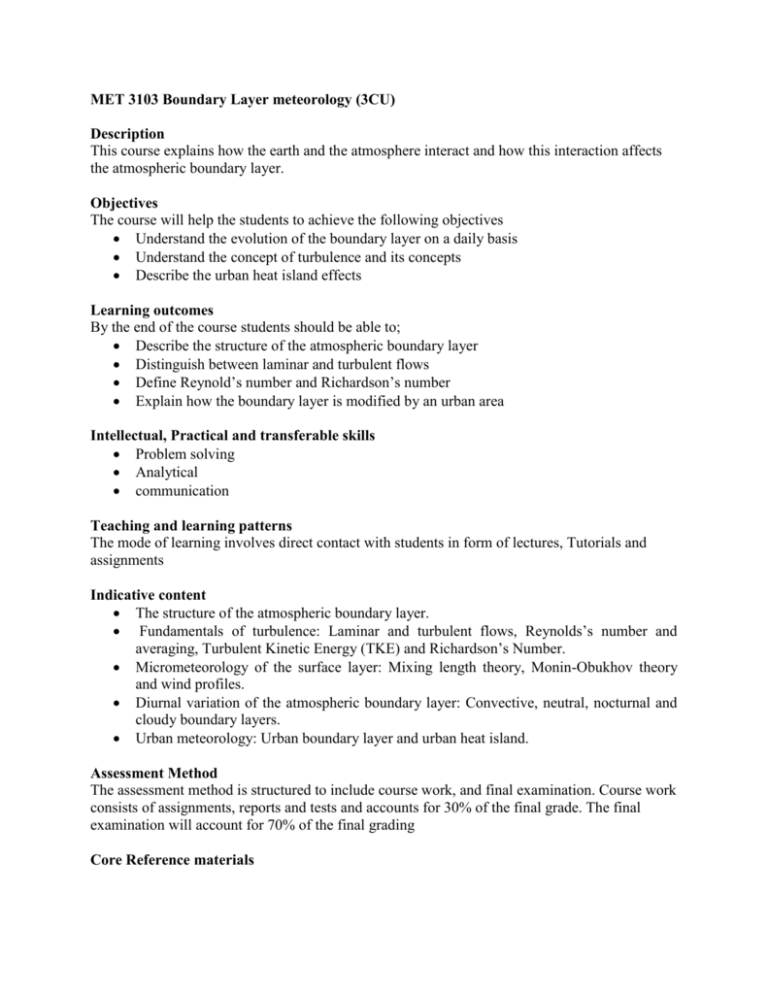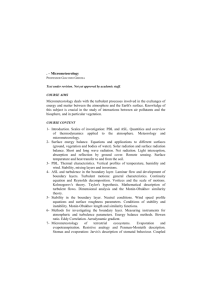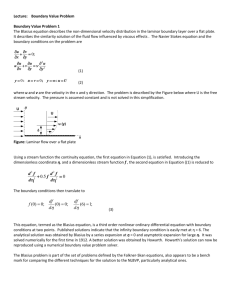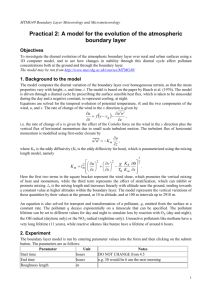MET 3103 Boundary Layer meteorology
advertisement

MET 3103 Boundary Layer meteorology (3CU) Description This course explains how the earth and the atmosphere interact and how this interaction affects the atmospheric boundary layer. Objectives The course will help the students to achieve the following objectives Understand the evolution of the boundary layer on a daily basis Understand the concept of turbulence and its concepts Describe the urban heat island effects Learning outcomes By the end of the course students should be able to; Describe the structure of the atmospheric boundary layer Distinguish between laminar and turbulent flows Define Reynold’s number and Richardson’s number Explain how the boundary layer is modified by an urban area Intellectual, Practical and transferable skills Problem solving Analytical communication Teaching and learning patterns The mode of learning involves direct contact with students in form of lectures, Tutorials and assignments Indicative content The structure of the atmospheric boundary layer. Fundamentals of turbulence: Laminar and turbulent flows, Reynolds’s number and averaging, Turbulent Kinetic Energy (TKE) and Richardson’s Number. Micrometeorology of the surface layer: Mixing length theory, Monin-Obukhov theory and wind profiles. Diurnal variation of the atmospheric boundary layer: Convective, neutral, nocturnal and cloudy boundary layers. Urban meteorology: Urban boundary layer and urban heat island. Assessment Method The assessment method is structured to include course work, and final examination. Course work consists of assignments, reports and tests and accounts for 30% of the final grade. The final examination will account for 70% of the final grading Core Reference materials Stull, R. B (1988): An introduction to boundary layer Meteorology, springer Oke,T.R (1988): Boundary layer climates, 2nd edition, Routledge Garratt,J. R (1994): The atmospheric boundary layer, Cambridge Univ. Press











